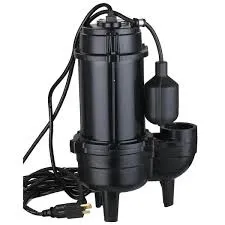Welsh
- Afrikaans
- Albanian
- Amharic
- Arabic
- Armenian
- Azerbaijani
- Basque
- Belarusian
- Bengali
- Bosnian
- Bulgarian
- Catalan
- Cebuano
- Corsican
- Croatian
- Czech
- Danish
- Dutch
- English
- Esperanto
- Estonian
- Finnish
- French
- Frisian
- Galician
- Georgian
- German
- Greek
- Gujarati
- Haitian Creole
- hausa
- hawaiian
- Hebrew
- Hindi
- Miao
- Hungarian
- Icelandic
- igbo
- Indonesian
- irish
- Italian
- Japanese
- Javanese
- Kannada
- kazakh
- Khmer
- Rwandese
- Korean
- Kurdish
- Kyrgyz
- Lao
- Latin
- Latvian
- Lithuanian
- Luxembourgish
- Macedonian
- Malgashi
- Malay
- Malayalam
- Maltese
- Maori
- Marathi
- Mongolian
- Myanmar
- Nepali
- Norwegian
- Norwegian
- Occitan
- Pashto
- Persian
- Polish
- Portuguese
- Punjabi
- Romanian
- Russian
- Samoan
- Scottish Gaelic
- Serbian
- Sesotho
- Shona
- Sindhi
- Sinhala
- Slovak
- Slovenian
- Somali
- Spanish
- Sundanese
- Swahili
- Swedish
- Tagalog
- Tajik
- Tamil
- Tatar
- Telugu
- Thai
- Turkish
- Turkmen
- Ukrainian
- Urdu
- Uighur
- Uzbek
- Vietnamese
- Welsh
- Bantu
- Yiddish
- Yoruba
- Zulu
Telephone: +86 13120555503
Email: frank@cypump.com
Rhag . 12, 2024 10:08 Back to list
pipeline/horizontal centrifugal pump
Understanding Pipeline Horizontal Centrifugal Pumps
Pipeline horizontal centrifugal pumps are essential components in a variety of industries, including oil & gas, water treatment, chemical processing, and food production. These pumps are designed to move fluids efficiently through pipelines by utilizing the principles of centrifugal force.
What is a Horizontal Centrifugal Pump?
A horizontal centrifugal pump consists of several key components an impeller, volute casing, shaft, and motor. The impeller, designed to spin at high speeds, is the critical element that converts the motor's input energy into kinetic energy in the fluid. As the impeller rotates, it creates a pressure difference that draws fluid into the pump from the suction inlet, propelling it through the volute casing and out through the discharge outlet.
The term horizontal refers to the pump's orientation; these pumps are mounted in a horizontal position, which aids in their efficient design and installation, particularly in pipeline systems. Horizontal centrifugal pumps are favored in many applications due to their straightforward design and ease of maintenance.
Advantages of Pipeline Horizontal Centrifugal Pumps
One of the primary advantages of horizontal centrifugal pumps is their ability to handle large volumes of fluid at relatively low pressures
. This makes them ideal for transporting water, chemicals, and other fluids over long distances. They can be used in both open and closed systems, adapting well to various operational requirements.Furthermore, horizontal centrifugal pumps are typically more energy-efficient than their vertical counterparts. The horizontal design prevents cavitation, a common issue in pump operation that can lead to damage over time. Additionally, these pumps often require less space for installation and can be more easily integrated into existing pipeline systems.
pipeline/horizontal centrifugal pump

Applications in Various Industries
The versatility of horizontal centrifugal pumps enables their widespread use across multiple sectors. In the oil & gas industry, they are used for transporting crude oil, diesel, and other petroleum products through extensive pipeline networks. In the water treatment sector, they play a crucial role in moving water through filtration systems, disinfection processes, and distribution systems.
Chemical processing plants often utilize these pumps due to their ability to handle a variety of corrosive and hazardous fluids. In food production, sanitary horizontal centrifugal pumps are used to transport ingredients and final products while maintaining strict hygiene standards.
Maintenance and Considerations
While horizontal centrifugal pumps are known for their reliability, regular maintenance is essential to ensure optimal performance. Routine checks should include inspecting seals and gaskets for leaks, monitoring the condition of the impeller, and ensuring that the motor is operating efficiently. Proper alignment of the pump and motor is also crucial to prevent excessive wear and tear on components.
When selecting a horizontal centrifugal pump for a specific application, considerations such as fluid characteristics (viscosity, temperature, and corrosiveness), required flow rate, and system pressure need to be evaluated. This helps in choosing a pump that meets the operational demands without sacrificing efficiency.
Conclusion
In summary, pipeline horizontal centrifugal pumps are integral to fluid transportation in various industries. Their efficient design, adaptability, and low maintenance requirements make them a popular choice for many applications. Understanding the principles of these pumps and their optimal use can lead to enhanced performance and longevity in fluid management systems. As industrial needs evolve, the advancements in pump technology will continue to play a critical role in fluid dynamics and engineering solutions.
-
Custom Drilling Mud and Slurry Pump Supplier - High Efficiency, Tailored Solutions
NewsJun.10,2025
-
Supply Vertical Submersible Sewage Pump High-Efficiency WQ/QW Pumps Supplier
NewsJun.10,2025
-
Premium Sewage Ejection System & Pumps Efficient Waste Removal
NewsJun.09,2025
-
Premium Wholesale Slurry Pump Impellers Durable & Efficient Slurry Handling
NewsJun.09,2025
-
Top Sewage Pump Companies Durable Industrial Solutions for Efficiency
NewsJun.09,2025
-
Heavy Duty Slurry Pumps - OEM High Performance & Bulk Wholesale
NewsJun.09,2025










